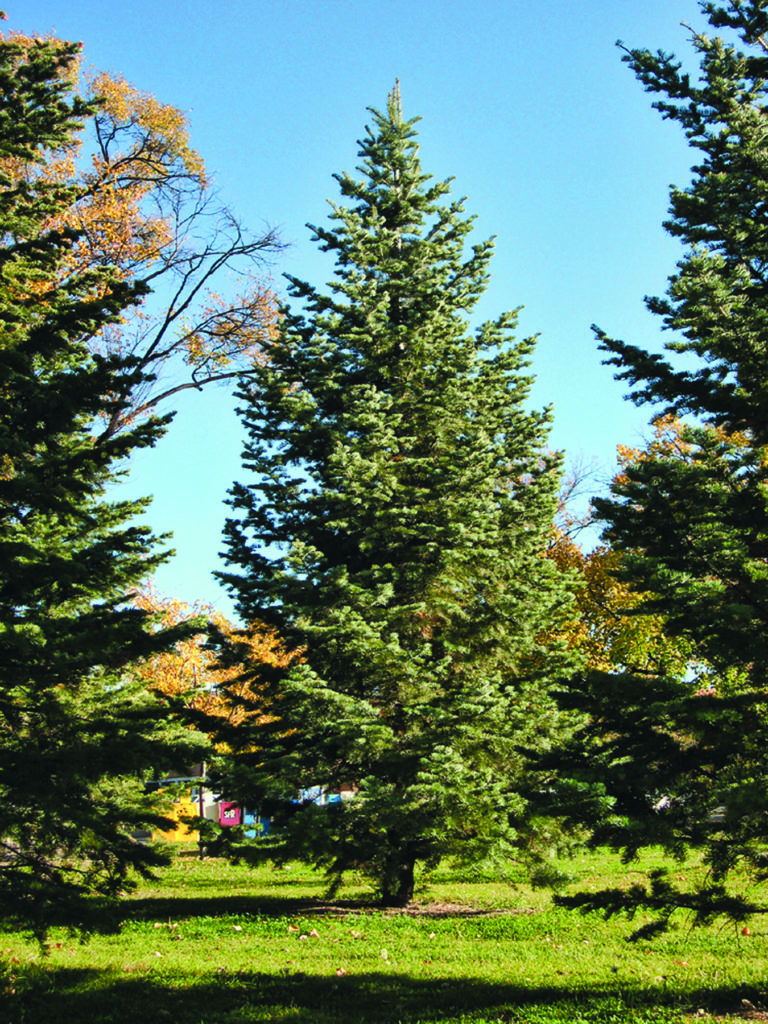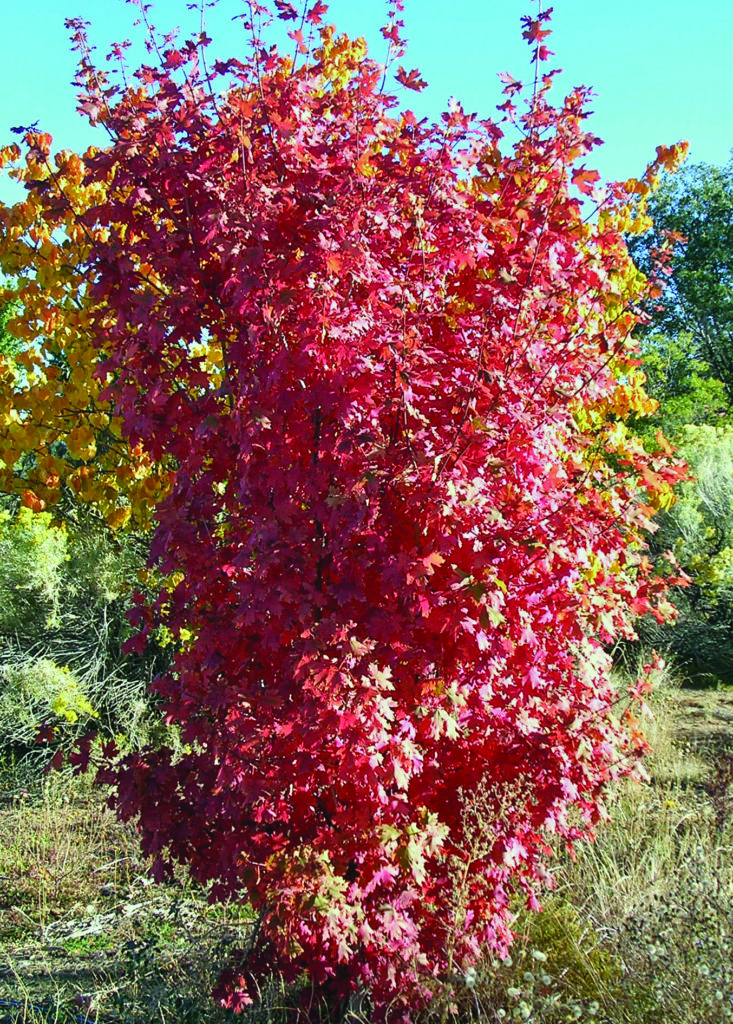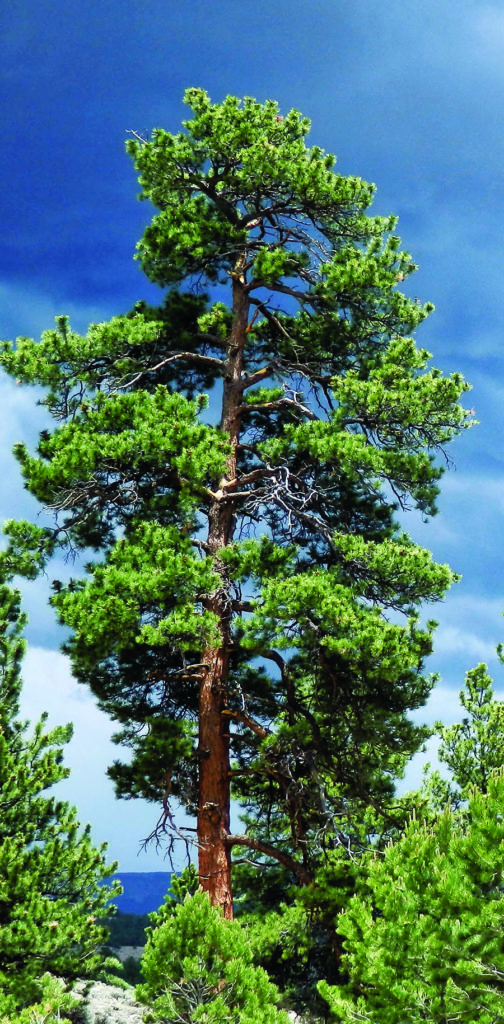– DR. SUZANNE SIMARD
Suzanne Simard was born in British Columbia, where she teaches at the University of British Columbia. Her 2021 book, Finding the Mother Tree, Discovering the Wisdom of the Forest, is a voyage – personal and scientific braided together; though we suppose science can be separate and objective, it isn’t.
Forests act as a single organism. The roots of trees are connected by the underground mycelia of fungi. Mushrooms we can see, but the mycelia are delicate threads underground. There can be hundreds of miles of mycelia under a single human footprint. The trees give the fungi sugar (carbon), the fungi give nutrients and water to the trees. Trees that are associates, like birch and Douglas fir, trade back and forth according to the seasons – birch to fir when the fir is shaded and not getting enough sun, fir to birch when the birch has no leaves. Thousands of fungi partner with certain trees (like alder, birch, and fir), while other trees work with their co-evolved partners. Trees and plants, fungi and soil with myriad microorganisms, coordinate. Big trees give from their huge resources to little seedlings that are trying to grow up from the darkness and couldn’t make it on their own. Because they nurture, Simard calls big trees Mother Trees. They are the most interconnected and the most needed trees in the forest.
There is also kinship among trees. Mother Trees give preferentially to seedlings from their seeds. Even at the end of their lives they pass more information and nutrients to their seed lineage. Trees and fungi from all the biodiversity of the forest send signals of drought and disease and decline, and marshal chemicals and apportion water to help and heal. There is competition among individuals, but strong cooperation for the resilience of the whole. Simard has followed this in the forest with radioactive tracing and DNA analysis and other wonderful modern methods, but she knows that science is old. This network of intelligence and sharing was passed down from long ago by indigenous peoples. An elder, Subiyay, of the Snohomish tribe from the Coast Salish told her that the fungi people and plant people and tree people taught us that under the forest floor there is an intricate web that keeps the forest healthy. They teach us also about building alliances and the diverse roles each of us has in the community. First Nations people protected all nature, fish to trees.
We are all one.
First Nations people protested tree cutting. In the 1960’s and 70’s when small-scale tree-cutting became industrial clearcutting, they fought. In the 90’s they fought more intensely. But clearcutting was not stopped. The ancient forests in barely 50 years have been almost eliminated. After clear-cutting, herbicides and burning are used to eliminate competition and mono-cultures are established of the desired tree (Douglas fir or lodgepole pine). Only 3% of British Columbia’s inland old growth rainforests remain.
Forests are too valuable to be clearcut, with their trees made into 2”x 4” sticks and toilet paper. Forests keep carbon locked up in their trunks and roots and in the soil, they store most of terrestrial carbon. They are home to 80% of our land biodiversity. They are the source of clean water. They provide oxygen – life’s breath.
Clearcutting leaves a wasteland. There are more jobs in selective horse-drawn tree harvesting. Slow work and a light touch guards biodiversity and beauty. We must save old forests, their magnificence, their Mother Trees.
With climate change, forests are even more threatened. There is rapid warming, less moisture, bigger storms with stronger winds and fires, faster insect reproduction, more disease. Trees will have to move to higher elevations and further north to survive. Adaptation to different conditions, and migration, take much more time than allowed by the fast pace of climate change.
Better understanding and practices are coming with work like Simard’s, and her ability to share the vital science. And we could get to know our forests with our children and friends. These forests would convince us to cherish them.
The Mother Tree Project is Suzanne Simard’s huge (almost Sweden-sized) forest renewal, hundred-year study in British Columbia. Worth joining. And repeating, in drylands.


